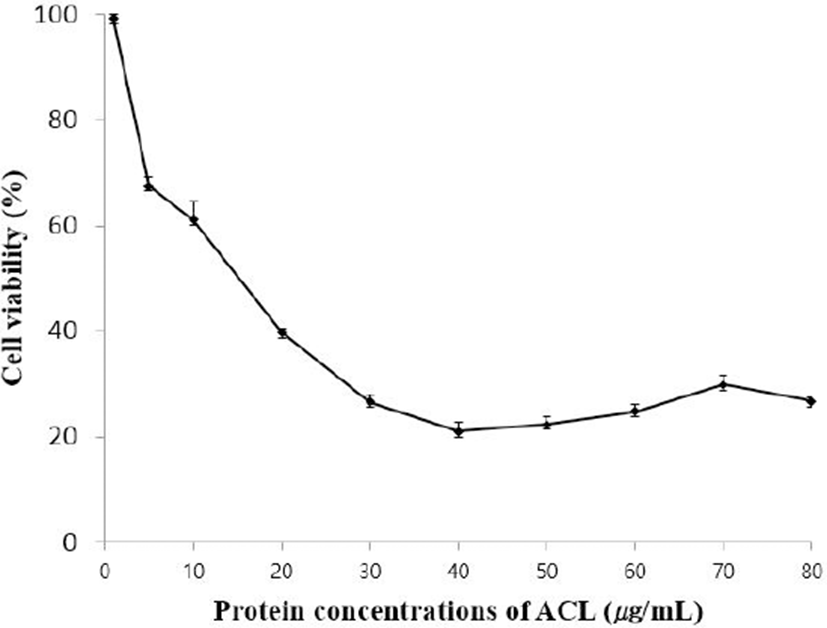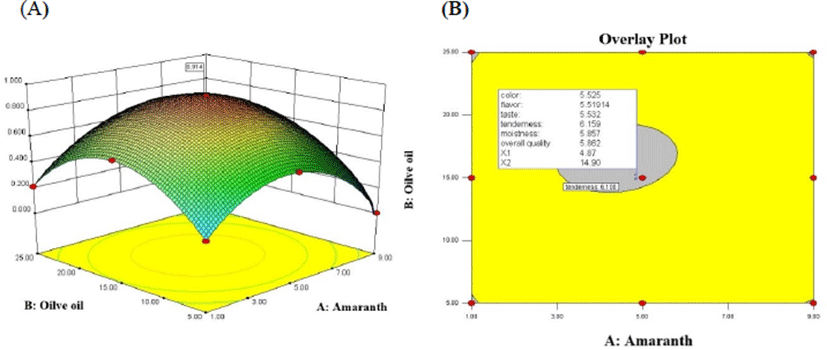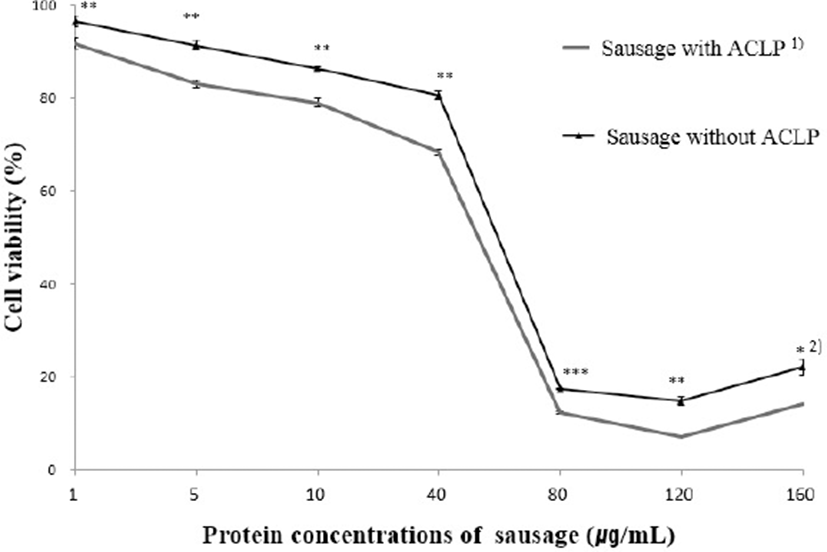Introduction
Economic development has introduced great changes in the necessities of life and lifestyle. In particular, consumption of meat and processed meat products have been increased because of westernization (Koo et al., 2007). However, the inclusion of food additives in processed meat products is common and studies have been oriented to develop healthy meat products (Bartsch et al., 1988). High-quality or healthy food items are known to contain less additives, fat and salt, and active research has been conducted to study these food items (Kruk et al., 2014).
Amaranth, an annual pseudocereal belonging to Amaranthus spp. L., is one of the oldest crops in Central and South America. Moreover, since they can grow well under unusual climatic and soil conditions, amaranth vegetables offer economic advantages with agricultural superiority. Most studies have focused on the nutritional values of amaranth grains, and only limited number of studies have investigated the use of amaranth as a vegetable (Lee et al., 2012). Amaranth leaves contain antimutagens and antioxidants (Anilakumar et al., 2006). Amaranth cauline leaf (ACL) extract prevents lipid oxidation, and hence lowers thiobarbituric acid and volatile basic nitrogen values during storage (Zhou et al., 2012). ACL is considered effective for lipid peroxidation of meat products, although there are only limited studies on meat and muscle-based products.
Therefore, the objective of this study was to examine the effect of ACL on antioxidation and inhibition on cancer cell proliferation, and suitability of ACL for sausage production.
Materials and Methods
ACL, A. cruentus L. containing leaf and stem, were harvested when their stem length were 10, 15, 20, 25, 30, 35, 40, and 45 cm in a farm at Gyeonggi-do, South Korea. ACL samples were then washed with water, followed by freeze-drying at –40°C for 48 h (Bondiro MCFD 8508 Freeze Dryer Ilsin, Korea). The samples were ground into 30 mesh, ACL powder (ACLP) samples were subjected to reflux extraction twice, each for 3 h at 60°C in 20ivolume of 70% ethanol (NVC-2100, EYELA, Japan). Finally, the extracts were stored at –40°C until analysis of the antioxidative activity.
To evaluate antioxidative activities for ACLP, 2,2-diphenyl-1-picrylhydrazyl (DPPH) activity assay and 2,2T-azino-bis (3-ethylbenzothiazoline-6-sulfonic acid) (ABTS) assay were conducted according to the methods by Brand-Williams et al. (1995) and Re et al. (1999) with some modifications, respectively. Optical densities for DPPH and ABTS were measured at 517 nm and 734 nm using a UV-Visible Spectrophotometer (V-530, Jasco Co., Japan), respectively. DPPH and ABTS activities were then calculated by [1–{Asample/Acontrol}]×100.
The analysis of the reducing power was carried out by measuring the absorbance of the solution at 700 nm according to method by Oyaizu (1986). Total phenol content and total flavonoid content were measured according to Folin-Denis method (Singleton and Rossi, 1965) and Davis method (Ghasemzadeh et al., 2010), followed by measurement of optical density at 750 nm and 420 nm, respectively. Total phenol content and total flavonoid content were calculated by each standard curves. Finally, total phenol content expressed as miligram gallic acid equivalent (GAE) per gram of extract, and total flavonoid content expressed as miligram catechin equivalent (CE) per gram of extract.
For MTT assay of ACL, the protein concentrations of the ACLP extracts were measured, using Bradford assay (Bio-Rad Laboratories, USA). One milliliter of Bradford working solution diluted 5 times with Bradford stock solution was mixed with 5 μL aliquots of extract samples, and their optical densities were measured at 595 nm, using a UV-Visible Spectrophotometer. The protein concentrations were determined by substituting bovine serum albumin concentration (BSA, Bio-Rad Laboratories, USA) in the standard curve. A mouse cell line of rectal cancer, CT-26, was obtained from the Korean Cell Line Bank, Korea. CT-26 cell was cultured in Dulbecco's Modified Eagle's (DMEM) medium (WelGene, Korea) supplemented with 10% fetal bovine serum (FBS, Gibco, USA) and 1% penicillin/streptomycin (PS, SV30010, Hyclone, USA), followed by incubation in 5% CO2 at 37°C. The cells were seeded in a 96-well cell culture plate at concentrations of 5×103 cells/100 μL. Different ACLP concentrations (1–80 μg/mL) of the sample in DMEM were treated into the cell monolayer of CT-26, and they were incubated in 5% CO2 at 37°C for 48 h. The cell viability (%) was evaluated by measuring the absorbance at 570 nm with an enzyme-linked immunosorbent assay (ELISA) microplate reader (SpectraMax M5, Molecular Devices, USA), using CellTiter 96® Non-Radioactive Cell Proliferation Assay (MTT, Promega Co., USA).
Determination of experimental design
Response surface methodology consists of a group of mathematical and statistical techniques used to determine appropriate ACLP amount in sausage production through Central Composite Design (CCD) of design ex expert 8 (Stat-Easy Co., USA), and experimental design was suggested from this anaylsis as presented in Table 1. For making sausage, we considered that 10 g of starch needed to be included in sausage formula, and ACLP needs to be replaced with some portion of the starch. Hence, the ratio of ACLP and starch combination was considered as one factor (factor A). In addition, we wanted to use olive oil rather than backfat, and thus, olive oil amount was considered the other factor (factor B). For the optimization, analysis of the sausage formulated with factor A (ACLP+starch) and factor B (olive oil) were independent variables, and it produced 10 experiment groups (Table 1). In the 10 experiment groups, the identical amounts of the factors A and B were included in experiment groups 9 and 10 to observe if sensory panel groups can have similar responses for sensory evaluation. The sausages were produced according to the procedure by Chung et al. (2016) with some modifications. The sausage mixture was tightly stuffed into 28-mm diameter of collagen sausage casing (Nippi Collagen Industries Ltd., Japan), heated at 75°C for 40 min, and cooled immediately in ice water for 10 min.
Sensory evaluation was concluded with 25 graduate students who took a sensory evaluation course for one semester. Ten types of sausages from 10 experimental groups were evaluated for color, flavor, texture, taste, tenderness, moistureness, and overall quality on a 7-point scale (1: dislike extremely, 7: like extremely) (SMWU-1710-HR-089-02).
In order to determine an optimized ACLP amount in sausage formula, the sensory evaluation data were analyzed with the following equation to determine statistical optimum point.
Sausages were prepared without ACLP (control) and with optimized ACLP and olive oil. Optimized ACLP sausages were produced according to the producer as describe above. The pH of two types of sausage were measured with a pH meter (F-51, Horiba, Japan), after homogenizing of 5 g uncooked control and ACLP sausage in 45 mL distilled water. The moisture contents of the cooked sausages (1 g) were measured with a moisture analyzer (SW-90D, Sanwoo, Korea). The cooked sausages (28 mm diameter×10 mm height) were analyzed with a texture analyzer (TA-XT Express v2.1, UK) to measure their hardness, adhesiveness, springiness, chewiness, and gumminess. The parameters of texture analysis were 1 mm/s of pre-test speed, 5 mm/s of test speed, 5 mm/s of post-test speed, 4 mm of test distance, and 50 g of force.
The antioxidative activities of control and optimized ACLP sausages were measured by same procedure as described above. Inhibition effect of control and optimized ACLP sausages on CT-26 cell were analyzed by same method as described above.
Results and Discussion
The evaluation of the antioxidative activity of ACLP increased during the early growth phase and decreased thereafter (Table 2). The IC50 values of DPPH and ABTS ranged between 279.87 and 1,041.38 μg/mL, and 798.37 and 2,672.61 μg/mL, respectively. Higher antioxidative activities of ACLP were observed, when the stem length was 15–20 cm (p<0.01). DPPH value was observed to be 160 mg gallic acid equivalent (GAE)/100 g for methanolic extract amaranth leaves grown in South Africa (Mampholo et al., 2015). While the EC50 of DPPH was 1,364 μg/mL for methanolic extract amaranth leaves grown in Ghana (Morrison and Twumasi, 2010). The IC50 value of DPPH in 10-cm stem length ACLP was a similar to amaranth leaves of Ghana. The reducing power and total flavonoid content of ACLP ranged between 0.151 and 0.289 μg/mL, and 368.75 and 785.25 mg CE/g, respectively, and the highest values were observed for 15-cm stem length of ACLP (p<0.001). Total phenol content for 20-cm stem length of ACLP showed the highest value (203.86 mg GAE/g), which was higher than those values that reported for amaranth leaves from South Africa (1.4 mg GAE/100 g) and India (61.8 mg GAE/100 g) (Mampholo et al., 2015, Adebooye et al., 2008). The overall antioxidative activity was maximum when the stem length of ACLP was around 15 cm. Thus, ACLP prepared from 15 cm stem length of ACL was used for further analyzes.
A decrease in CT-26 cell viability in the protein concentration of ACLP extract means that the proliferation of CT-26 cell was inhibited by the ACLP (Fig. 1). At 5 μg/mL of ACLP extract, the viability of CT-26 cells was 67%, and the extracts had 80% of the suppressive effect at 40 μg/mL concentration. In a study by Sani et al. (2004), Amaranthus gangeticus leaf extract suppressed hepatic cancer (HepG2) and breast cancer (MCF-7) cells, and exhibited a slight suppressive effect on a colorectal cancer cell line (Caco-2). ACL contains high levels of phenol compounds, including anthocyanin, flavonoids, gallic acid, and quercetin (Choi et al, 2010). In particular, anthocyanin, a type of flavonoid, is directly absorbed in the intestine of mice or humans (Youdim et al., 2000). Thus, inhibition effect of ACLP on CT-26 cell proliferation might be caused by the phenol compounds.

Quadratic models, evaluaing the interaction between the independent variables was chosen for the evaluation of sensory characteristics. r2 values of the models were more than 0.9 for color, texture, tenderness, moistness and overall quality, and suggests that the models were appropriate to determine appropriate ACLP amounts. Preference for all tested sensory evaluation factors were increased upto certain amount of ACLP, and then, the preference started to decrease. This trend was also observed for olive oil (Table 3). Response surface plots produced by the models of the surface evaluation factors suggested that the optimum formulation of ACLP sausage was 4.87 g of ACL powder with 5.13 g of starch, and 14.90 g of olive oil per 100 g pork. (Fig. 2).

We compared optimized ACLP and control sausages, and found that the optimized ACLP sausages had lower (p<0.05) moisture content and higher (p<0.05) hardness than control sausage, but other texture characteristics were not different between two groups (Table 4). This result indicates that ACLP does not influence on sausage texture characteristics.
The comparison of the antioxidative activities of the optimized ACLP and control sausages revealed that higher (p<0.05) activities were generally observed in the optimized ACLP sausages than control except for DPPH radical scavenging activity (Table 5). The suppressive effects of optimized ACLP sausages on CT-26 cell proliferation were significantly higher (p<0.05) than in control sausages extract (Fig. 3). The optimized ACLP sausage extract yielded a viability of 68.34% at 40 μg/mL which is lower (p<0.01) than that of control sausage extract (Fig. 3). The highest suppressive effect was observed at 120 μg/mL, and the effect of optimized ACLP extract was still higher (p<0.01) than control sausage extract (Fig. 3). ACL contains a large amount of total flavonoids and phenols with antioxidant activity, and thus, they may reduce cell viability of CT-26 cells (Venskutonis and Kraujalis 2013; Paśko et al., 2009; Cho et al., 2008). The control sausages were also showed inhibition of CT-26 cell proliferation. It might be caused by the presence of olive oil. Olive oil is reported to influence the suppression of oxidative stress and inflammatory response in humans, and has been known to significantly suppress the proliferation of human breast cancer cells (Ramos et al., 2013; Márquez Martín et al., 2006).

In conclusion, ACLP has antioxidation activity and inhibition effect on CT-26 cell proliferation, and optimized ACLP sausages at 4.87 g of ACLP showed still antioxidation activity and inhibition effect on CT-26 cell proliferation. Therefore, use of ACLP in sausage formula may be appropriate to promote functional value of sausage.













